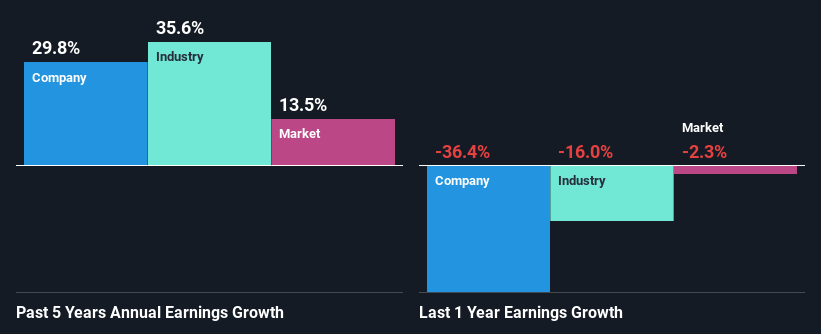Are Strong Financial Prospects The Force That Is Driving The Momentum In Phillips 66's NYSE:PSX) Stock?
Phillips 66 (NYSE:PSX) has had a great run on the share market with its stock up by a significant 20% over the last three months. Given the company's impressive performance, we decided to study its financial indicators more closely as a company's financial health over the long-term usually dictates market outcomes. In this article, we decided to focus on Phillips 66's ROE.
ROE or return on equity is a useful tool to assess how effectively a company can generate returns on the investment it received from its shareholders. Simply put, it is used to assess the profitability of a company in relation to its equity capital.
See our latest analysis for Phillips 66
How Do You Calculate Return On Equity?
ROE can be calculated by using the formula:
Return on Equity = Net Profit (from continuing operations) ÷ Shareholders' Equity
So, based on the above formula, the ROE for Phillips 66 is:
23% = US$7.2b ÷ US$32b (Based on the trailing twelve months to December 2023).
The 'return' is the yearly profit. So, this means that for every $1 of its shareholder's investments, the company generates a profit of $0.23.
What Is The Relationship Between ROE And Earnings Growth?
We have already established that ROE serves as an efficient profit-generating gauge for a company's future earnings. Based on how much of its profits the company chooses to reinvest or "retain", we are then able to evaluate a company's future ability to generate profits. Generally speaking, other things being equal, firms with a high return on equity and profit retention, have a higher growth rate than firms that don’t share these attributes.
Phillips 66's Earnings Growth And 23% ROE
Firstly, we acknowledge that Phillips 66 has a significantly high ROE. Further, even comparing with the industry average if 21%, the company's ROE is quite respectable. Given the circumstances, the significant 30% net income growth seen by Phillips 66 over the last five years is not surprising.
Next, on comparing Phillips 66's net income growth with the industry, we found that the company's reported growth is similar to the industry average growth rate of 36% over the last few years.
The basis for attaching value to a company is, to a great extent, tied to its earnings growth. What investors need to determine next is if the expected earnings growth, or the lack of it, is already built into the share price. This then helps them determine if the stock is placed for a bright or bleak future. Is PSX fairly valued? This infographic on the company's intrinsic value has everything you need to know.
Is Phillips 66 Using Its Retained Earnings Effectively?
Phillips 66 has a really low three-year median payout ratio of 17%, meaning that it has the remaining 83% left over to reinvest into its business. So it looks like Phillips 66 is reinvesting profits heavily to grow its business, which shows in its earnings growth.
Besides, Phillips 66 has been paying dividends for at least ten years or more. This shows that the company is committed to sharing profits with its shareholders. Upon studying the latest analysts' consensus data, we found that the company's future payout ratio is expected to rise to 31% over the next three years. Consequently, the higher expected payout ratio explains the decline in the company's expected ROE (to 18%) over the same period.
Conclusion
In total, we are pretty happy with Phillips 66's performance. In particular, it's great to see that the company is investing heavily into its business and along with a high rate of return, that has resulted in a sizeable growth in its earnings. Having said that, on studying current analyst estimates, we were concerned to see that while the company has grown its earnings in the past, analysts expect its earnings to shrink in the future. To know more about the latest analysts predictions for the company, check out this visualization of analyst forecasts for the company.
Have feedback on this article? Concerned about the content? Get in touch with us directly. Alternatively, email editorial-team (at) simplywallst.com.
This article by Simply Wall St is general in nature. We provide commentary based on historical data and analyst forecasts only using an unbiased methodology and our articles are not intended to be financial advice. It does not constitute a recommendation to buy or sell any stock, and does not take account of your objectives, or your financial situation. We aim to bring you long-term focused analysis driven by fundamental data. Note that our analysis may not factor in the latest price-sensitive company announcements or qualitative material. Simply Wall St has no position in any stocks mentioned.

